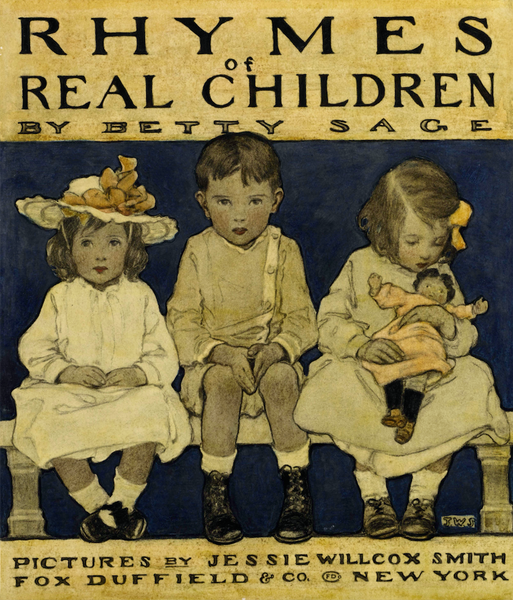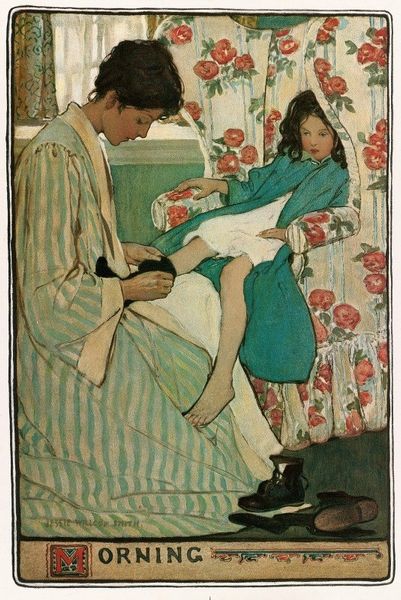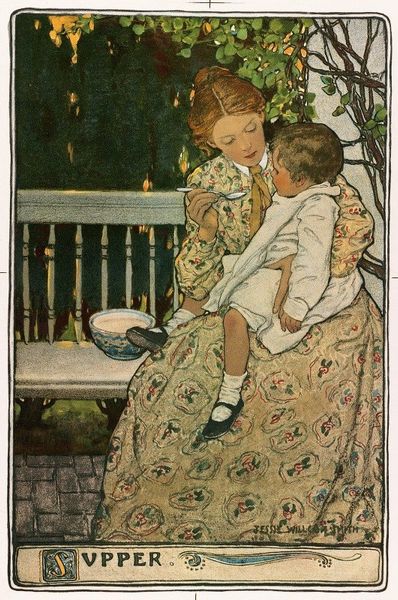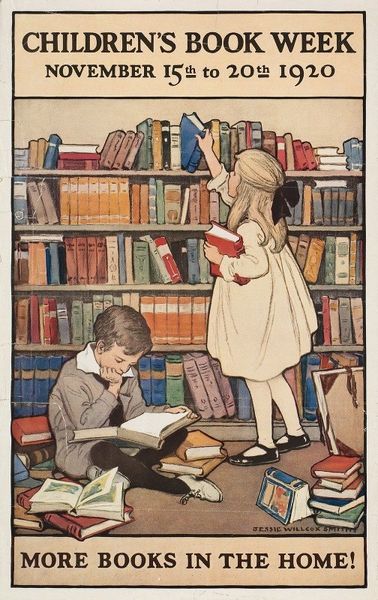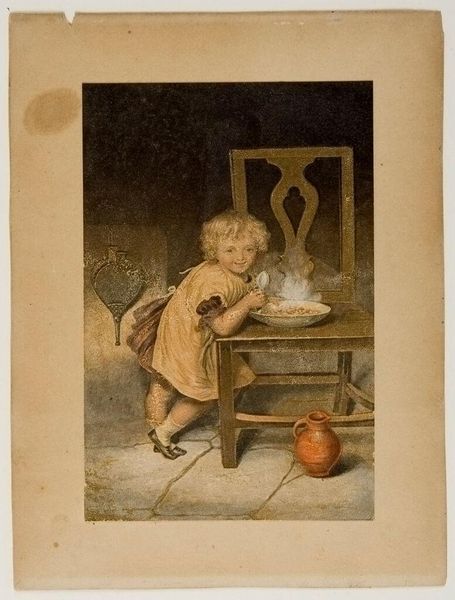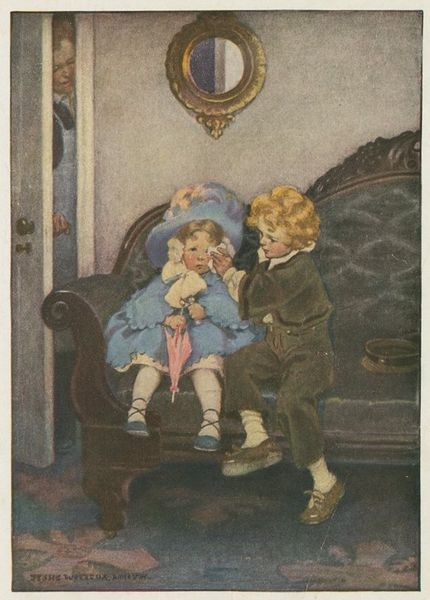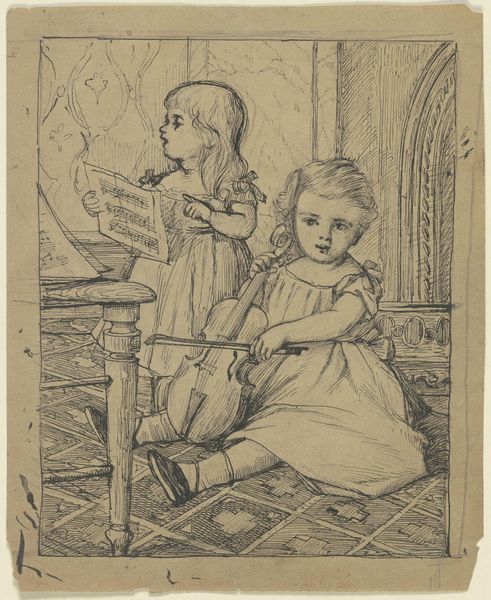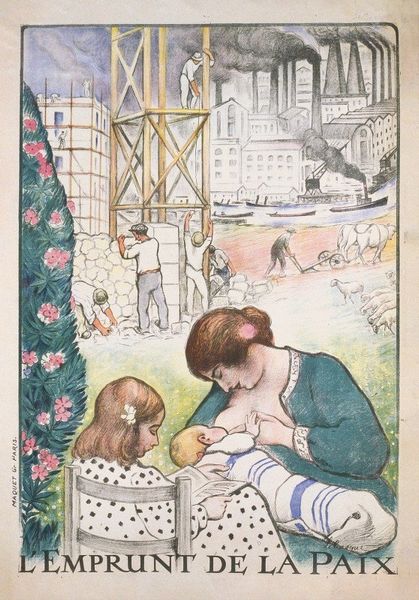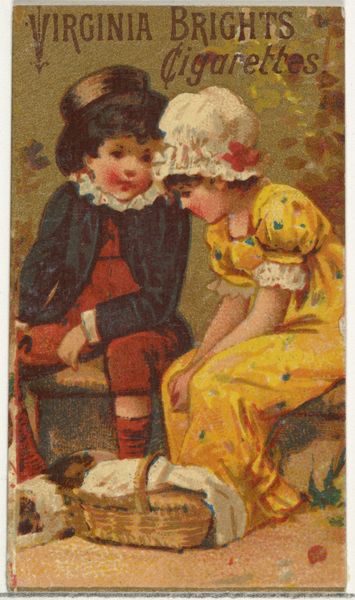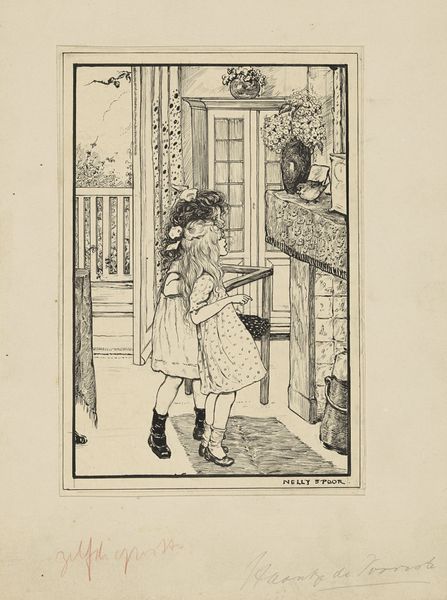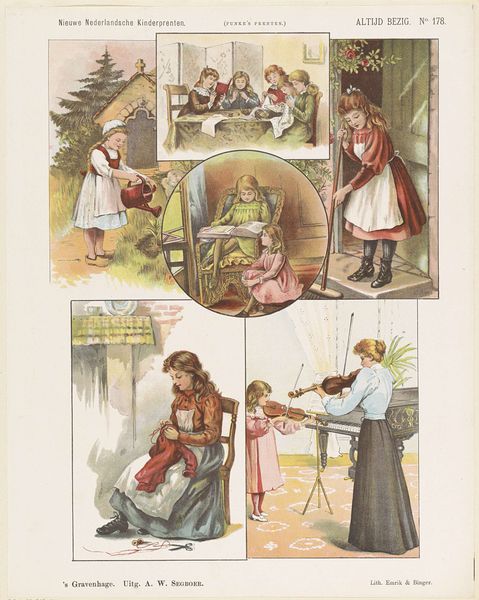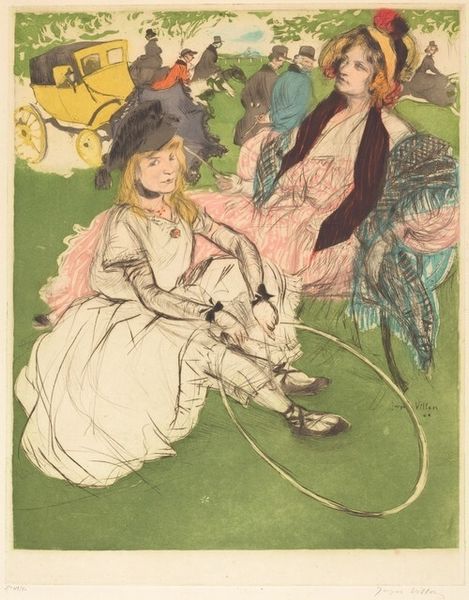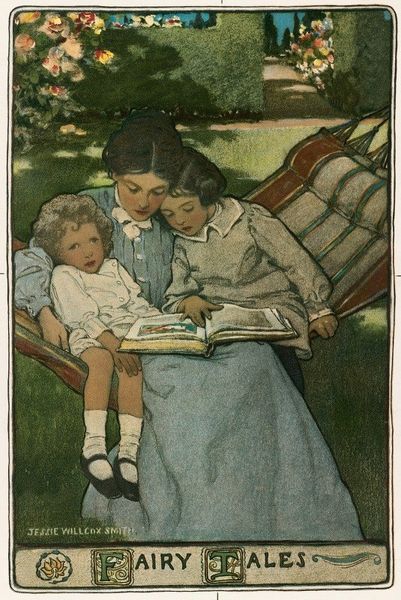
Copyright: Public Domain: Artvee
Curator: This artwork is a 1910 poster by Jessie Willcox Smith entitled "Cosy Homes make happy childhood American Radiators & Ideal Boilers". It's rendered primarily in pencil, with subtle impressionistic painting touches. Editor: It projects such a tender feeling. The colors are muted, almost monochromatic, which enhances the coziness—almost as if warmth emanates from the scene. It definitely romanticizes childhood. Curator: Absolutely. The poster speaks to the evolving role of domesticity in early 20th century America, especially the emerging consumer culture and its focus on children’s well-being as a marker of societal progress. Editor: Do you mean that there is an idea of the safe private spaces to which only few social classes had access? This almost acts like an accusation in current times, right? What I do think interesting is how radiators almost act as characters inside a warm familial stage. The presence of those bulky and comforting items is so prominent! Curator: Precisely! These radiators weren't just about providing heat; they were potent symbols of modernity, promising families healthier, safer lives, provided, of course, they could afford them. Smith brilliantly marries these concepts. Editor: She subtly uses visual language too, for instance she depicts dolls acting as secondary actors or mini versions of reality inside a childish fantasy of comfortable homes! One can see traces of gender socialisation or family's ideals through such little things as those small dolls. Curator: True. Also, observe how the narrative revolves entirely around the female space, the domestic setting as constructed around children, making it crucial in our interrogation of historical gender roles and power dynamics within the home. The house becoming the first representation and reinforcement of certain political structures. Editor: I now see that the picture goes much deeper that just an advertisement, It encourages us to revisit history through the critical lens, inviting an exploration of societal shifts, industrialization's influence, and even capitalist agendas present even in such seemingly safe family-focused imagery. Curator: And from an historical viewpoint, understanding Smith's other illustrations alongside this advertisement, we can consider how this era's imagery played a pivotal role in forming and upholding values regarding gender, class, and even ideas of hygiene and modernity, and these impact us even today. Editor: Indeed, what a multi-layered piece—a window into a past where comfort, aspiration, and commerce were intertwined so intimately and where we can question their reach into modern life.
Comments
No comments
Be the first to comment and join the conversation on the ultimate creative platform.
